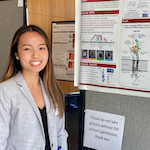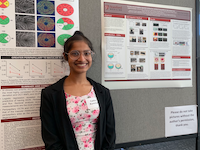
Palo Alto, CA — Two percent of the population is at risk of developing optic neuropathy and vision loss from optic drusen, calcifications found at the anterior optic nerve. Stanford researchers are focusing on why these calcifications form and why they cause vision loss.
For the past three years, Joyce Liao M.D., Ph.D., professor of ophthalmology and director of the Stanford Center for Optic Disc Drusen at the Byers Eye Institute, has organized the conference to bring together physicians and scientists to share research advances in the field.
The aim of this year’s conference was to present the most current clinical and laboratory research findings, foster collaborations between experts and trainees, educate the public, and strategize next steps to better understand and treat optic disc drusen. The event also highlighted other eye diseases studied across the ophthalmology department.

Vinit Mahajan M.D., Ph.D., professor and vice chair of ophthalmology research, said, “It was great to get all our scientists together for this conference, and Dr. Liao gets credit for creating a highly collaborative program that broadly impacts vision research." The Mahajan lab team is working to help identify molecular genetic biomarkers of optic disc drusen and translate their findings into the development of gene and small-molecule therapies.
Lab members Elena Wang, Caitlin Kunchur, Soo Hyeon Lee, Luis Sabbage, Joel Franco, Jennifer Vu, Young Joo Sun, and Teja Chemudupati were in attendance.
Jennifer Vu, a junior scientist headed to the David Geffen school of Medicine at UCLA in the fall, shared her findings on the use of a proteotype-phenotype model to address the pathogenicity of genetic mutations in eye disease genes.
Stanford undergraduate researcher Caitlin Kunchar displayed an effetive means of administering a sustained release ocular drug implant into the mouse eye.

Junior scientist Elena Wang presented on calpain hyperactivity and its association with eye disease. The review associated with the poster was recently published in the journal Trends in Molecular Medicine.
Teja Chemudupati, clinical research coordinator who will be joining the Masters of Science in Clinical Informatics program at Stanford University, detailed updates on the eye tissue biorepository platform used to enhance clinical research.

Visiting from Brazil, medical student Luis Sabbage shared a poster on detecting SARS-CoV-2 in human tear fluid.

